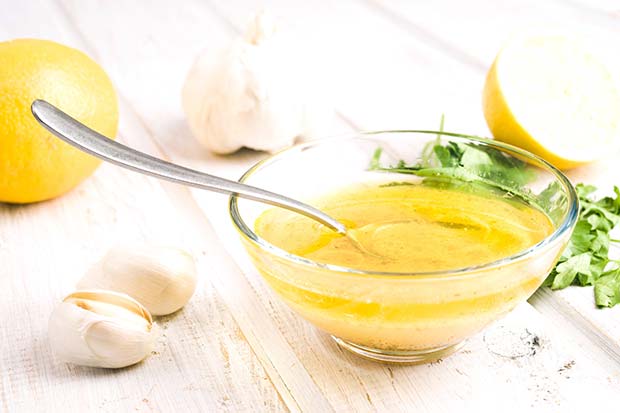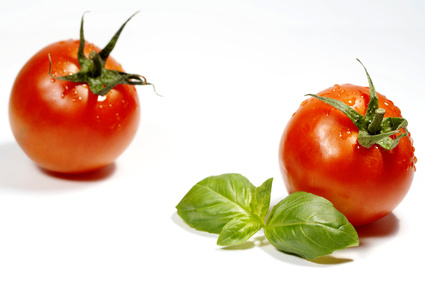
There are some obvious food and wine pairings: almost any red wine goes well with a piece of rare meat and most white wines are a good match for fish baked in the oven. Conversely, certain foods are difficult, if not impossible, to pair with wine. Here’s a brief overview of some food “enemies” which will spoil your wine.
Obviously we’re not going to get into pairings here which are simply ridiculous because they’re too risky or disastrous, such as serving a Pauillac with oysters or a Sauternes with roast beef… However, sometimes with the best will in the world there are certain foods which scarcely give any wine the slightest chance and which will make your guests wince – even serving a really fine bottle would be a complete waste as your pairing is doomed to fail. Of course, there are sometimes ways around this; however, here are some foods which are bound to cause you a real headache if you try pairing them.
Salad dressing (green and raw vegetable salads)
Despite being closely related to wine (etymologically and physically), vinegar is obviously one of its worst enemies… And as they battle it out, it’s the wine which always comes off worst… Clearly we’re talking here about “raw” vinegar used in a green salad or with raw vegetables and not the vinegar used to deglaze your pan-fried meat or offal, which won’t cause any particular problem. So it’s best just to pass on the wine, both red and white, when eating a traditional dressed salad. It’s also very hard to match any wine with raw vegetable salads (grated carrot, cucumber, beetroot, celeriac in remoulade dressing, etc) because they are vegetables (even without dressing) and more especially because they usually come with … vinaigrette. A nice, dry “little” white might be the least bad solution. In the summer, by the pool, you may possibly imagine serving a rosé too, which you can keep on drinking with the barbecue to follow – but just don’t expect any miracles! Unless it’s 28°C in the shade and the cicadas are singing – and then everything will seem a great anyway!
Vegetables (especially green ones)
As a general rule, vegetables just don’t get on at all with wine. Obviously they are eaten alongside meat and fish as part of a balanced diet and this makes finding a pairing easier. However, even if you’re not vegetarian, you may well be quite happy eating a vegetable-only dish, say in the evening. And to be sure, a vegetable stir-fry with Brussels sprouts, green cabbage or broccoli, with their rather distinct bitterness and chewy vegetable texture, is going to kill any wine. You won’t fare any better with buttered French beans, spinach or peas either. Since vegetables cooked au gratin are covered with cheese (cauliflower, chard, cardoons, etc), you can partly avoid the trap with a white wine which isn’t too acidic. Potatoes are more neutral; whether fried, mashed or baked ‘au gratin’, a simple dry white wine will go well: it won’t be spectacular but you can’t go too far wrong. Two vegetables are somewhat of a special case: asparagus and artichokes. Asparagus has a distinct bitterness so it needs both acidity and fruit. Try a really dry Alsace Riesling or a Loire Chenin Blanc with white asparagus, and a dry Muscat d’Alsace or a Condrieu with green asparagus. However, once again, don’t expect miracles… It’s practically impossible to pair artichokes – even with a simple, dry white wine (although you could perhaps try a Sylvaner?).

Eggs
Whether fried, soft or hard-boiled, eggs don’t get on at all well with wine. They give it a very unpleasant metallic taste which can be slightly more acceptable (let’s say rather less unacceptable) if you drink a dry white wine rather than a red wine. However, to be honest it’s more or less mission impossible. There is a way round this: if you cook an omelette and add something with a pronounced flavour such as truffle shavings or ratatouille, then you can pair it more easily either with a red or a white, depending on your dish, because now the egg is hidden by the strong taste of whatever was added to the omelette mixture.
Garlic
If your garlic is fresh and added to roast meat so that it’s well cooked and virtually melting into the meat juices, it won’t pose any particular problem. On the other hand, if your garlic is hardly cooked or isn’t even cooked at all as with garlic and parsley butter (used to stuff snails for example), garlic mayonnaise or in some raw vegetable salads (double whammy!), it will kill off any wine that comes its way. As with raw vegetable, the magic of sharing a meal with close friends in a lovely Provence farmhouse garden on a sunny day will make the pairing of a garlic mayonnaise dish with the local rosé seem quite acceptable. Objectively it won’t be great, but subjectively it’ll be heaven!
We’re now going to take a look at two final ingredients which at times can be wine’s foe but at other times its friend: tomatoes and spices.

Tomatoes
When uncooked, tomatoes are similar to other raw vegetables, but they’re also very acidic which makes matching them with wine quite tricky, whether small cherry tomatoes with an aperitif or a tomato salad, even without dressing. On the other hand, tomatoes which are cooked as part of many meat dishes (osso bucco, sauté of veal or chicken marengo, bolognaise sauce for pasta, pizzas, ratatouille and so on) can go very well with the least acidic red wine you can find (even when cooked, tomatoes are still acidic) but which still has plenty of roundness and volume, as for example, reds from the southern Rhône or the Languedoc.
Spices
A spicy dish can kill a wine just as it can bring out the very best in a pairing. Of course, we’re talking here about food that is spicy but without going overboard. Any dish that overwhelms everything else is bound to kill the flavour of any wine. However, if you cook something which is highly flavoured and reasonably “hot” it can still be paired with wine, but not just any old wine. As a rule of thumb, red wines (especially the lightest ones) are to be avoided: the spices will destroy them. Only certain power-packing red wines from the south of France can be served with particular North African dishes, for example tagines which are neither particularly sweet or savoury or a couscous. However, in just about every situation, you should avoid drinking red wine with Chinese and especially Thai food. Only a dry, white wine – but one which is also rich and full-bodied – will make a successful match. Sometimes even wines which are slightly, but not excessively, sweet can work, such as wines from the Loire (Vouvray and Montlouis) or Alsace. In the case of these few examples, instead of fighting the wine the spice befriends it, so you can end up with unusual and rather astonishing pairings which will leave your guests pleasantly surprised.

These few tips are intended to help you avoid the main pitfalls when working out pairings. If now you decide to go ahead and give your friends a tomato salad, with generous quantities of garlic, garnished with hard boiled eggs and artichoke hearts, swimming in a hot, spicy dressing and serve a fine red Burgundy with it, then there’s really nothing more we can do to help you – just don’t be surprised if your friends don’t want to come back and eat with you!



